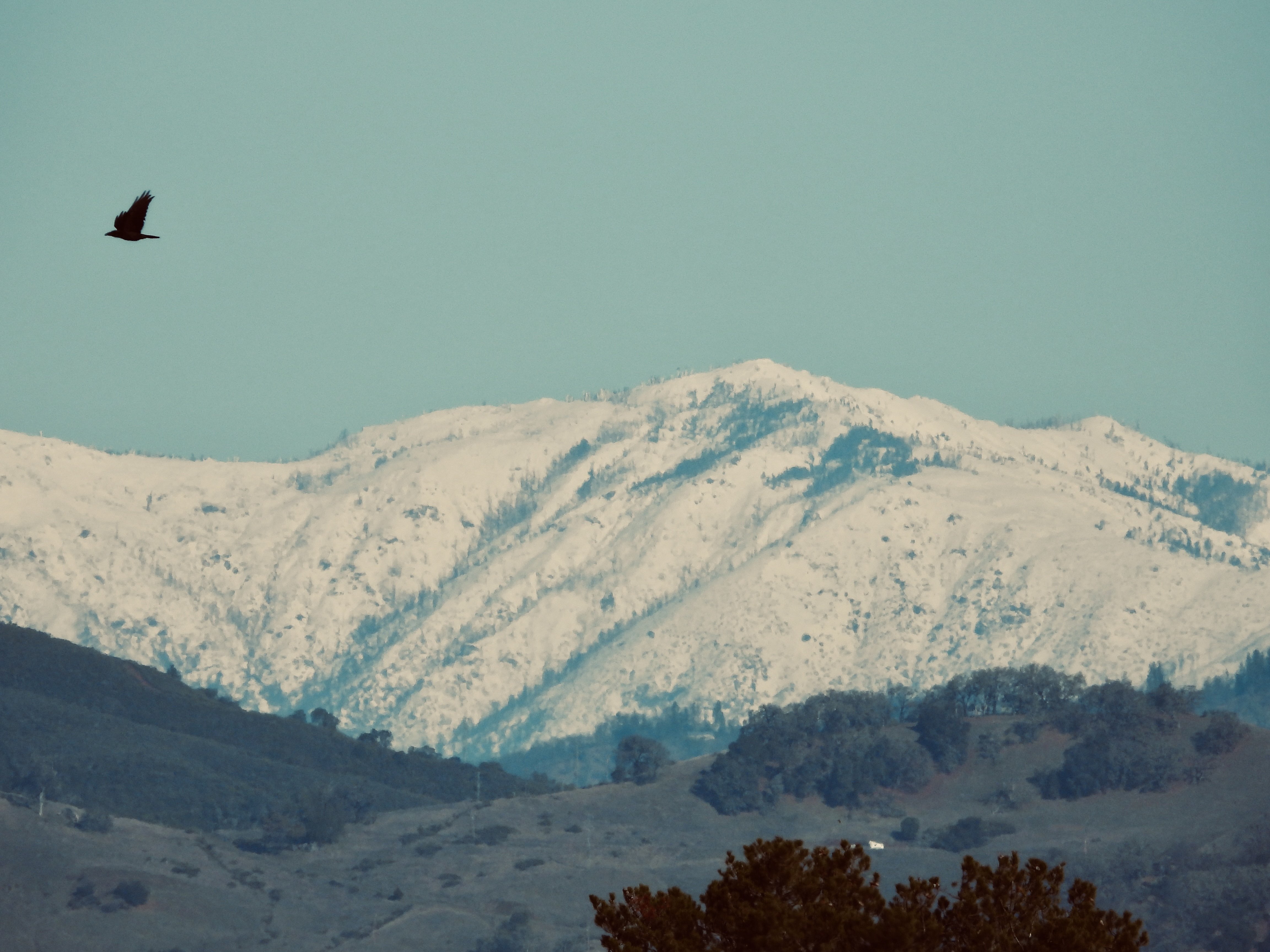Welcome to our letters to the editor/opinion section. To submit yours for consideration, please send to matthewplafever@gmail.com. Please consider including an image to be used–either a photograph of you or something applicable to the letter. However, an image is not necessary for publication.
Remember opinions expressed do not necessarily reflect that of MendoFever nor have we checked the letters for accuracy.

King Salmon. Delicious. California king salmon, that is. In the nineteen sixties and seventies, it was priced a little bit more than hamburger. It was a staple on family plates. During World War I, canned king salmon from the abundant rivers and tributaries of the Sacramento valley fed American and allied forces in Europe, and a goodly portion of America too. Last summer, I saw king salmon for sale in a Bay Area fish market priced at thirty-two dollars a pound. Currently, one can purchase king salmon at Costco for about half that price per pound, but it arrives frozen all the way from New Zealand on a ship. It’s raised in a salmon farm. Who knows what antibiotics are used? Frozen salmon is also available at varied supermarket chains. Some of it comes from Alaska, but it’s never king salmon. A large portion of Alaska salmon sail frozen to China where it is unfrozen, processed and packaged, and frozen again before it’s shipped to your local store. Yum! It only takes two to four months to cross the Pacific twice.
Local congressman, Jared Huffman, co-chair of the wild salmon caucus, apparently has a remedy to restore king salmon to their historical spawning grounds. According to a recent press release from his office, he’s introduced a bill that will provide forty million dollars to “provide identification of salmon areas and strongholds” to “sustain thriving salmon populations.” What a noble inclination—restore salmon in California to “thriving” numbers. Who could resist? How about the fish?
I’ve read the bill. Huffman’s legislation purports to spent a great deal of money to identify “strongholds.” In other words, historic, salmon spawning grounds. Ask some old-timers or the Sierra Club, they’ll tell you exactly where they are and it won’t even cost a dime. Huffman’s bill also provides money to remove obstacles to salmon spawning grounds. Great idea. Start a company. Give it a fancy environmental name; rake the money in removing log jams and impediments blocking access to historical spawning beds. The only problem is that when salmon arrive at their “strongholds,” the gravel and pebbles needed to incubate their eggs will still be covered by hundreds of years of silt created by logging practices, housing developments, and agricultural expansion. Dig out the mud and silt, truck fresh gravel in to restore the spawning grounds? Now we’re getting somewhere. Like digging the Panama Canal, which will take a lot more than the forty million bucks provided by this bill to magically restore hundreds of miles of impacted salmon beds. Without spawning gravel replacement, without enough water to do the trick, it could take a thousand years to wash the mud and silt to the sea. By then, there may be a dozen wild salmon left.
There’s a larger issue here; one that impacts every one of us. On most rivers, salmon spawning grounds, in other words, their so-called “strongholds,” are blocked by dams. These strongholds no longer exist. Do you really care about salmon? Do you want their indigenous spawn to endure? Simple. Take out every dam. In California, agriculture will cease to exist. There will be no juice for your Tesla, and people in Santa Rosa or Ukiah will be limited to one gallon of water a day. This bill is a feel-good farce.
Currently, off the shores of California, the highest percentage of salmon swimming in the sea (up to 90%) began their lives in a restorative hatchery on the endangered Sacramento River. They’re raised as juveniles and trucked to San Pablo Bay where they’re released to go to sea. Restorative hatcheries are not fish farms where salmon are aquatic prisoners dosed in antibodies swimming around in what comes out the other end. State, restorative hatcheries in California sustain what little salmon are left. Wild salmon spawning naturally? There are hardly any left, where—once upon a time—they thieved in every river north of the Golden Gate. Restorative hatcheries? When it comes to Congressman Huffman’s bill, there’s not a single cent for that. Enjoy the symbolism on your plate.
-Michael Koepf
Previous Coverage










I too wish Huffdude had included funds for rain-dances and a few dam removals in this bill because what California’s salmon need is more water and access to historic spawning ground. Michael’s assessment hits the bull’s eye: this is a feel-good bill to pad Huffdude’s resume and shuffle a few bucks around. It is certain that some of this money will end up here, trying to identify a “stronghold” in mendocino. Ha Ha Ha! Millions of dollars have been spent here on the mendo coast studying and “restoring” salmon habitat with poor results. Local/regional managers at cdfw, nature conservancy, trout unlimited, etc seem to care about nothing beyond securing their next meager “woody debris”, or “monitoring” grant in order to justify and extend their own employment (by the way, these are the same fools who removed all wood from our rivers in the 80’s, now getting paid to roll a few logs back in the water—now that’s job security!). These people will keep up status quo and continue collecting paychecks long after the last salmon disappear from the mendo coast. All the while they will congratulate themselves for their hard work! They do not want public input nor to discuss any alternatives, lest their easy paycheck be threatened. Ever tried to get in contact with someone at local cdfw inland fisheries during business hours? You can’t—they’re all probably out surfing.
Also the idea of “salmon strongholds” in california is kind of silly, as the strongholds are now all up north of the smith river.
Like Michael said, salmon won’t really return to california until the people of this state make some gargantuan lifestyle changes that would allow for dam removal. Then we would need to see elwha river levels of restoration and the rain dances would need to begin. Miles of habitat opened and free flowing water; not just a few bandaid logs scattered here and there to justify a few paychecks and maintain status quo. For now we should use the 40 million bucks to increase smolt output at restorative hatcheries and to keep more water in the in the rivers. Maybe reopen the egg take at noyo. That might be a bandaid that helps.
What Salmon, thanks for your long form and thoughtful response. Your comment exemplifies the type of conversation I would like this website to host.
While I agree I’d like to see more money for hatcheries with Patagonia and others spewing hatchery hate it’s hard to get support from non-angling urbanites whose multimillion dollar high end outdoor retailers are driving the anti-hatchery narrative.
Dam removal on both the eel and Klamath look likely. I’ve got no problem because folks shouldn’t be farmin a desert and hydro electric production is a sliver of actual power generation in ca. Y’all are acting like this bill is garbage because it’s not a panacea for salmon but isn’t doing something better than nothing?
great job Michael.
what is ironic, being from NE, is to see
North Atlantic salmon for sale in FB.
not so sure about dam removals…given the water shortage and what would be the loss of power generation.
Right up there with The Great Redwood Trail as a preeminent example of forward thinking.
Perhaps there will be an observation point along the way?
It’s a lost cause. Climate change is here and everything is going to go extinct. It’s a waste of money. It’s sad to say. The tribes will suffer the most because it’s such a huge part of their lives. It’s a species on the decline. It’s in the process of going extinct just like so many others.
We want to make money, we want to decrease bad press. So we blow smoke up your ass. Politics American style. Tuna with dolphin chunks is better than salmon so get used to it.
The best chance Salmon will have for a real future in California will be in another 60 years when the entire central valley is flooded and all the tributaries then flow directly into the ocean in the central bay. The water will be cold and hopefully clear and clean. Then will be the time to restock those creeks unless of course they still have dams on them. Of course millions of other animals will all be gone due to all that salt water moving into the central valley so maybe you better make a plan for them too.